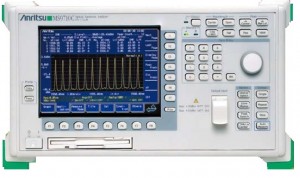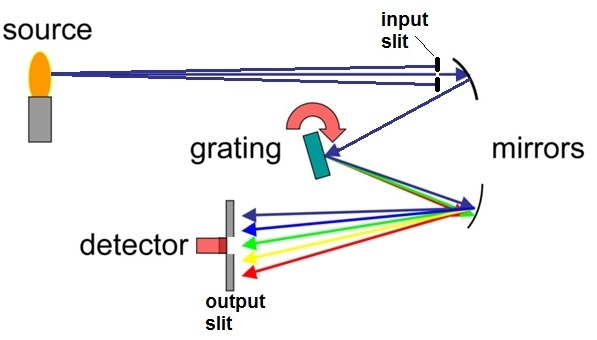The Optical Spectrum Analyzer (OSA) is likely the most common piece of test equipment after the optical power meter that is fou nd in telecom equipment test labs and production test stations. The OSA is chosen mostly because of its extreme versatility in reading various optical signals both in power and in wavelength. There are two types of OSA; one is based on Michelson’s interferometry and most time referred to as a Multi Wavelength Meter. We will not expand on that type as we assimilate it to a Wave Meter which will be discussed separately. The other one is based on Diffraction Grating mirror and we’ll focus on that technology.
nd in telecom equipment test labs and production test stations. The OSA is chosen mostly because of its extreme versatility in reading various optical signals both in power and in wavelength. There are two types of OSA; one is based on Michelson’s interferometry and most time referred to as a Multi Wavelength Meter. We will not expand on that type as we assimilate it to a Wave Meter which will be discussed separately. The other one is based on Diffraction Grating mirror and we’ll focus on that technology.
The OSA is the common name for a spectrometer used specifically in the telecom test field. The main difference between a “plain” spectrometer is the size, its wavelength range and the numerous automated features that are found in an OSA and not programmed in a Spectrometer. We mostly find spectrometer in laboratories dedicated to the study of optical components and behavior’s; not in telecom. The common name for the light filtering section of an OSA is a monochromator which can be split in two parts “mono” for single and “chromator” for light so the part dedicated to filtering out, as much as possible, just the one wavelength from all the light coming through the input.The Optical Spectrum Analyzer (OSA) is likely the most common piece of test equipment after the optical power meter that is found in telecom equipment test labs and production test stations. The OSA is chosen mostly because of its extreme versatility in reading various optical signals both in power and in wavelength.
Fig1: Simplified view of a monochromator (spectrometer)
The deployment of WDM fiber optics telecom system in all aspects of communication created the need for outside plant technicians to now measure wavelength as opposed to plain power as they used to. Small portable OSAs were then introduced. Because of the smaller size of the monochromator, those do not have the same quality as their larger lab counterparts. Their use was mostly to be able to identify the various WDM signals and get a feel for flatness between the various peeks (equalization).
Simplified, the Optical Spectrum Analyzer can be broken down to 5 main sections. The input which is the entrance of the light before filtering, the filtering section, the detection, the data processing and the user interface.
